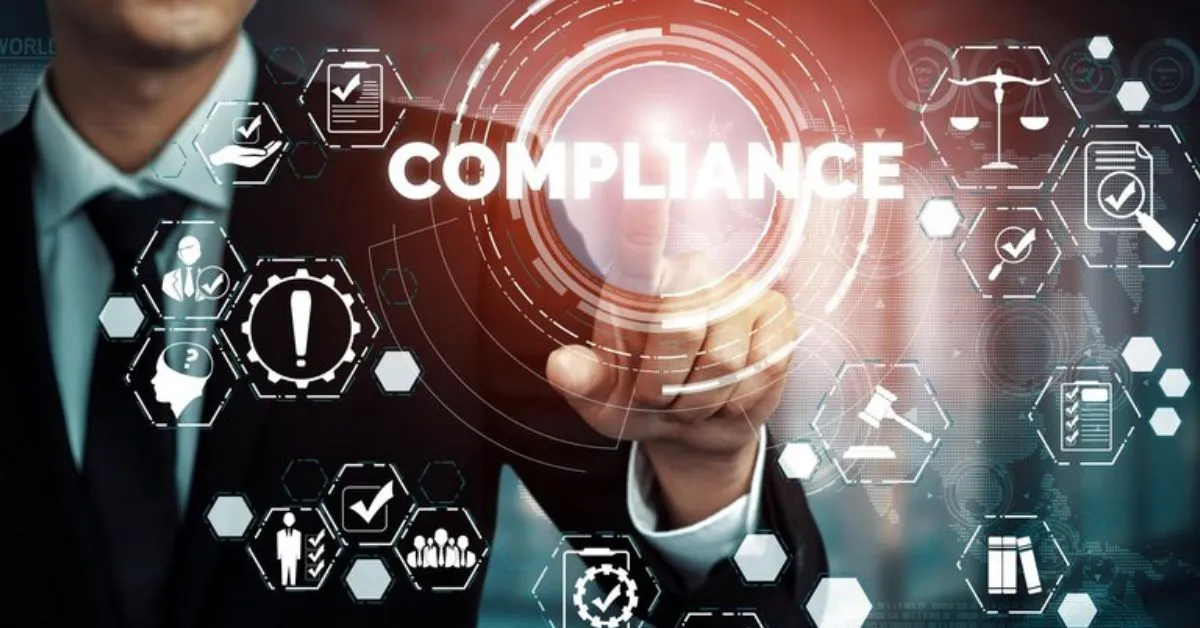Compliance, or “compliância” in Portuguese, is a critical concept in the business world, encompassing adherence to laws, regulations, guidelines, and specifications relevant to an organization’s operations. Ensuring compliance is vital for maintaining legal standing, protecting a company’s reputation, and avoiding costly penalties.
History and Evolution of Compliance
Early Beginnings
The concept of compliance has its roots in the early 20th century when businesses began recognizing the need for standardized practices to ensure safety, fairness, and accountability. Initially, it was more about adhering to basic legal requirements and industry standards.
Modern Developments
In the contemporary era, compliance has evolved significantly, driven by the increasing complexity of regulations and the global nature of business. Today, the programs are comprehensive and cover various aspects of business operations, from financial transactions to data security.
Types of Compliance
Regulatory Compliance
It involves adhering to laws and regulations imposed by governmental bodies. This includes financial regulations, environmental laws, and employment standards. Failure to comply can result in legal penalties and financial loss.
Corporate Compliance
It refers to the internal policies and procedures a company implements to ensure adherence to external regulations and internal standards. It includes codes of conduct, ethical guidelines, and internal audits.
Legal Compliance
It focuses on ensuring that the company’s operations and transactions are conducted within the legal frameworks. This includes contract management, intellectual property rights, and litigation management.
IT and Data
With the rise of digital transformation, IT and data compliance have become crucial. This involves adhering to data protection laws such as GDPR, ensuring cybersecurity, and managing digital records.
Key Components of an Effective Compliance Program
Policies and Procedures
An effective compliance program starts with well-defined policies and procedures. These guidelines provide a framework for expected behaviors and processes within the organization.
Training and Education
Regular training and education are essential to ensure that employees understand compliance requirements and can apply them in their daily work. This includes workshops, e-learning modules, and certifications.
Monitoring and Auditing
Continuous monitoring and periodic auditing are crucial to identify potential issues. This proactive approach helps in early detection and resolution of problems, ensuring ongoing adherence to regulations.
Reporting Mechanisms
Establishing clear and accessible reporting mechanisms encourages employees to report compliance concerns without fear of retaliation. This fosters a transparent and accountable organizational culture.
Benefits
Risk Management
Effective compliance helps in identifying, assessing, and mitigating risks, thereby protecting the organization from potential legal and financial repercussions.
Reputation Management
A robust compliance program enhances the company’s reputation, building trust among customers, partners, and regulators. It demonstrates a commitment to ethical practices and legal adherence.
Legal Protection
The programs provide a safeguard against legal actions and penalties by ensuring that the company operates within the legal boundaries.
Operational Efficiency
The streamlines processes and ensures consistency in operations, leading to improved efficiency and effectiveness in achieving business goals.
Challenges in Implementing Compliance
Complexity of Regulations
The ever-increasing complexity of regulations across different jurisdictions poses a significant challenge for companies. Keeping up with these changes requires constant vigilance and adaptation.
Cost of Compliance
Implementing and maintaining a comprehensive program can be costly. This includes expenses related to training, monitoring systems, and audits.
Resistance to Change
Employees and management may resist changes associated with new requirements, viewing them as additional burdens rather than beneficial practices.
Case Studies of Successful Compliance Programs
Company A: Financial Industry
Company A, a leading financial institution, implemented a comprehensive program that reduced regulatory penalties by 50% over three years. Their strategy included advanced monitoring systems and continuous employee training.
Company B: Healthcare Sector
In the healthcare sector, Company B’s compliance program focused on patient data protection and regulatory adherence. Their robust policies and regular audits resulted in zero data breaches and improved patient trust.
Company C: Technology Field
Company C, a tech giant, leveraged AI and machine learning to enhance their compliance efforts. Automated checks and predictive analytics helped them stay ahead of regulatory changes and avoid potential pitfalls.
Regulatory Bodies and Compliance Standards
International Regulatory Bodies
International regulatory bodies such as the International Organization for Standardization (ISO) set global standards for it across various industries. These standards ensure consistency and quality in international operations.
National Regulatory Bodies
National bodies like the Securities and Exchange Commission (SEC) in the US and the Financial Conduct Authority (FCA) in the UK oversee within their respective countries, enforcing regulations to protect consumers and maintain market integrity.
Industry-Specific Standards
Different industries have specific standards that organizations must follow. For example, the Health Insurance Portability and Accountability Act (HIPAA) governs healthcare, while the Sarbanes-Oxley Act (SOX) applies to financial reporting.
Technological Solutions
Compliance Management Software
Compliance management software streamlines the process by automating tasks such as policy management, incident reporting, and audit trails. This technology ensures accuracy and efficiency in managing requirements.
Artificial Intelligence and Machine Learning in Compliance
AI and machine learning are revolutionizing it by providing predictive analytics, identifying potential risks, and automating routine tasks. These technologies enhance the accuracy and effectiveness of programs.
Future Trends in Compliance
Increasing Importance of Data Privacy
With data breaches becoming more common, data privacy regulations like GDPR are gaining prominence. Companies must prioritize data protection to comply with these stringent requirements.
Globalization and Compliance
As businesses expand globally, they face the challenge of complying with multiple regulatory frameworks. A unified, global approach to it is becoming increasingly important.
Sustainable and Ethical Compliance
Sustainability and ethical practices are becoming key components of programs. Companies are now focusing on environmental responsibility and ethical business practices to meet regulatory and societal expectations.
Compliance in Different Industries
Finance
In the finance industry, it ensures the integrity of financial markets and protects consumers. Regulations such as the Dodd-Frank Act and Basel III are critical for financial institutions.
Healthcare
It is vital for protecting patient data and ensuring the quality of care. Regulations like HIPAA and the Affordable Care Act (ACA) govern healthcare.
Manufacturing
Manufacturing it involves adhering to safety standards, environmental regulations, and quality controls. This ensures safe and sustainable production processes.
Technology
In the technology sector, it focuses on data protection, intellectual property rights, and cybersecurity. Regulations like GDPR and the Digital Millennium Copyright Act (DMCA) are crucial.
The Role of these Officers
Responsibilities
The officers are responsible for developing, implementing, and monitoring programs. They ensure that the organization adheres to legal and regulatory requirements.
Skills Required
Effective compliance officers possess strong analytical skills, attention to detail, and excellent communication abilities. They must stay updated with regulatory changes and industry trends.
Career Path
The career path of a compliance officer typically starts with roles in legal or regulatory departments, progressing to senior positions and, eventually, executive roles such as Chief Officer (CO).
How to Foster a Culture of Compliance
Leadership and Commitment
Leadership commitment is crucial for fostering a culture of it. Leaders must set the tone at the top and demonstrate their commitment to ethical practices.
Communication and Transparency
Open and transparent communication about it’s expectations and challenges is vital. Regular updates and feedback mechanisms ensure that employees are informed and engaged.
Incentives and Penalties
Implementing incentives for it and penalties for non-compliance encourages adherence to regulations. Recognizing and rewarding compliant behavior reinforces its importance.
Common Misconceptions about Compliance
Ethics
While it focuses on adhering to laws and regulations, ethics is about doing what is right. Both are crucial for a sustainable business, but they are not the same.
Cost Center
Contrary to the misconception that compliance is merely a cost center, it actually protects the company from legal penalties and enhances operational efficiency, offering long-term financial benefits.
One-Time Effort
It is not a one-time effort but an ongoing process. Continuous monitoring, training, and updates are essential to maintain over time.
Conclusion
In summary, compliance is a multifaceted and dynamic field that plays a critical role in ensuring the legal and ethical operation of businesses. By implementing effective programs, companies can manage risks, protect their reputation, and enhance operational efficiency. The future of it will continue to evolve, driven by technological advancements and global regulatory developments.
FAQs
1. What is the role of compliance in business?
It ensures that a business operates within the legal and regulatory frameworks, protecting it from legal penalties and enhancing its reputation.
2. How can companies ensure they are compliant?
Companies can ensure it by implementing comprehensive programs, conducting regular audits, and staying updated with regulatory changes.
3. What are the penalties for non-compliance?
Penalties for it can include fines, legal action, and damage to the company’s reputation, potentially leading to financial losses and operational disruptions.
4. How does compliance benefit employees?
It benefits employees by providing a safe and ethical work environment, protecting their rights, and ensuring fair practices within the organization.
5. What are the latest trends in compliance?
The latest trends in it include increased focus on data privacy, the use of AI and machine learning in management, and the growing importance of sustainable and ethical practices.





4 thoughts on “Compliance : A Comprehensive Guide to Ensuring Legal and Ethical Business Practices”